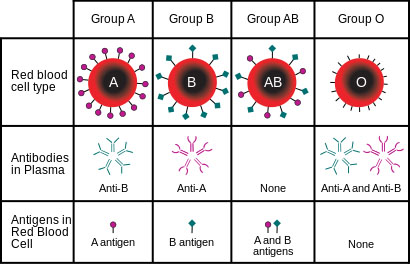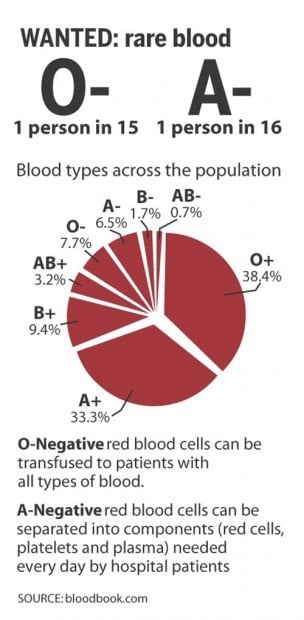
You may have heard the phrase “most rare blood type” and wondered what exactly that means. Other dictionary definitions of “rare” include “seldom occurring, scarce, unique, exceptional.” (n.d.).What usually comes to mind when you think about the meaning of “rare”? Probably something that is uncommon or special, like a rare gift, a rare occasion or a rare gem. First report of known rare Rhnull phenotype individuals in Iran.

Ethnic codes and blood donations: What’s the big deal? You can learn more about how we ensure our content is accurate and current by reading our editorial policy. We link primary sources - including studies, scientific references, and statistics - within each article and also list them in the resources section at the bottom of our articles. Medical News Today has strict sourcing guidelines and draws only from peer-reviewed studies, academic research institutions, and medical journals and associations. For instance, researchers estimate that just 1 in 6 million people have the RzRz blood type. Some of these blood types are extremely rare.

Caucasian: Kell b-negative and Vel-negative blood types.East European and Russian Jewish: Drori a-negative blood type.Pacific Island and Asian: JKnull blood type.Native American and Alaskan native: RzRz, also known as Rhnull or “golden blood”.African American: U-negative and Duffy-negative blood types.The American Red Cross data below list the rare blood type and the ethnic group in which it is most common: Some of these rare blood types and blood group systems are distinctly more common in certain ethnic groups. In addition, scientists have identified 36 different blood group systems, some of which can cause problems with blood transfusions. If only 1 in 1,000 people lack it, the individual’s blood type is very rare. According to the International Society of Blood Transfusion, if only 1 in 500 people are missing the same antigen as an individual, their blood type is rare. Having an antigen that most people do not have, or missing an antigen that most people do have, means that an individual has a rare blood type. It is important to make a distinction between the rarest of the eight most common blood types and the extremely rare subtypes. Caucasian: 1% AB-negative, 2% B-negative, and 3% AB-positiveĪ and B antigens only represent two of approximately 600 other known antigens that can differentiate blood types.Asian: 0.1% AB-negative, 0.4% B-negative, and 0.5% A-negative.Latin American: 0.2% AB-negative, 1% B-negative, and 2% both A-negative and AB-positive.African American: 0.3% AB-negative, 1% B-negative, and 2% A-negative.Statistics from the American Red Cross show that the following are the most rare forms of the major eight blood types in the U.S.: is AB-, with less than 1% of the population having this type. The rarity of and demand for this type of blood emphasize the importance of blood donors.Ĭlick here to learn more about blood types. For this reason, some blood centers collect ethnic information from blood donors.įor some conditions, such as thalassemia and sickle cell disease, this matching is even more important because these conditions are more common among certain ethnic communities, and people may need frequent transfusions.įor example, only 2% of donors have a rare subtype of blood that doctors often use to treat sickle cell disease, but demand for it is increasing by 10–15% each year. To increase the likelihood of well-matched blood types, experts recommend matching donors and recipients along ethnic lines, particularly for rare blood types. Inherited characteristics, such as blood types, tend to run in ethnic groups. Due to this genetic factor, the American Red Cross suggest that when people need blood, especially those with rare blood types, the best matches tend to come from people of the same race or ethnic background. The genes that a person inherits from their parents determine the mix of antigens and proteins in their blood.

If it is present, the blood group is Rh-positive, but if it is absent, the blood group is Rh-negative.Ĭombining these two characteristics yields the eight most common blood types. Red blood cells may have another antigen called the Rh antigen on their surface.


 0 kommentar(er)
0 kommentar(er)
